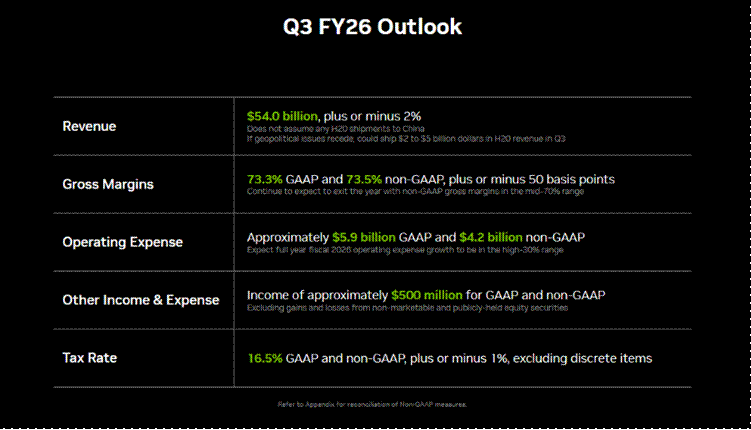Warming up to NVIDIA's earnings - can the AI party continue?
The world's most valuable company, NVIDIA, now takes up a whopping 7.6% of the "broad" S&P 500 index and over 14% of the tech-heavy NASDAQ-100 index. That alone means that investors will have to pay attention to the financial statements on Wednesday evening. The result, almost no matter what, will affect both US and European stock indices.

On top of that, in the last few weeks, doubts have emerged about the skyrocketing valuations in AI stocks, after, in particular, Meta's financial statement, with the stock falling about 20% since. Therefore, NVIDIA's announcements about chip demand next year will be the most important thing to keep an eye on as an investor. Statements that can either confirm or deny the high growth expectations can trigger large price fluctuations for the entire technology sector.
As shown below, NVIDIA's official guidance for the financial statements is USD 54 billion in revenue and an adjusted gross margin of 73.5%. Market expectations are USD 55.2 billion in revenue and an adjusted gross margin of 73.7%. In other words, expectations for NVIDIA are high, and it is already factored in that NVIDIA will once again have to beat their own expectations.

The market's expectations for NVIDIA's revenue correspond to an annual growth of 57.4%. While this is an exceptionally high growth rate for such a large company, it is significantly lower growth than what NVIDIA has delivered since the big AI wave started in 2023.
As shown below, NVIDIA is expected to continue their annual revenue growth of around 50% over the next year, and therefore the big question you as an investor should ask yourself is whether NVIDIA actually manages to live up to market expectations for 2026 and 2027? If you do not live up to this, it could potentially mean large price falls for the NVIDIA share.

Another important factor to look out for at NVIDIA is the company's return on invested capital (ROIC). In short, ROIC measures what NVIDIA gets out of the money they have invested in the company. Today, NVIDIA's ROIC sits at over 100%, which, even for the tech industry, is "unprecedented" high. This could help justify the high valuation of NVIDIA, but at the same time, a falling ROIC could penalize the stock price.
Therefore, as an investor, you should also keep an eye on whether NVIDIA will see a falling ROIC during the next year as a result of higher competition in the AI chip industry.
Sven Watthy